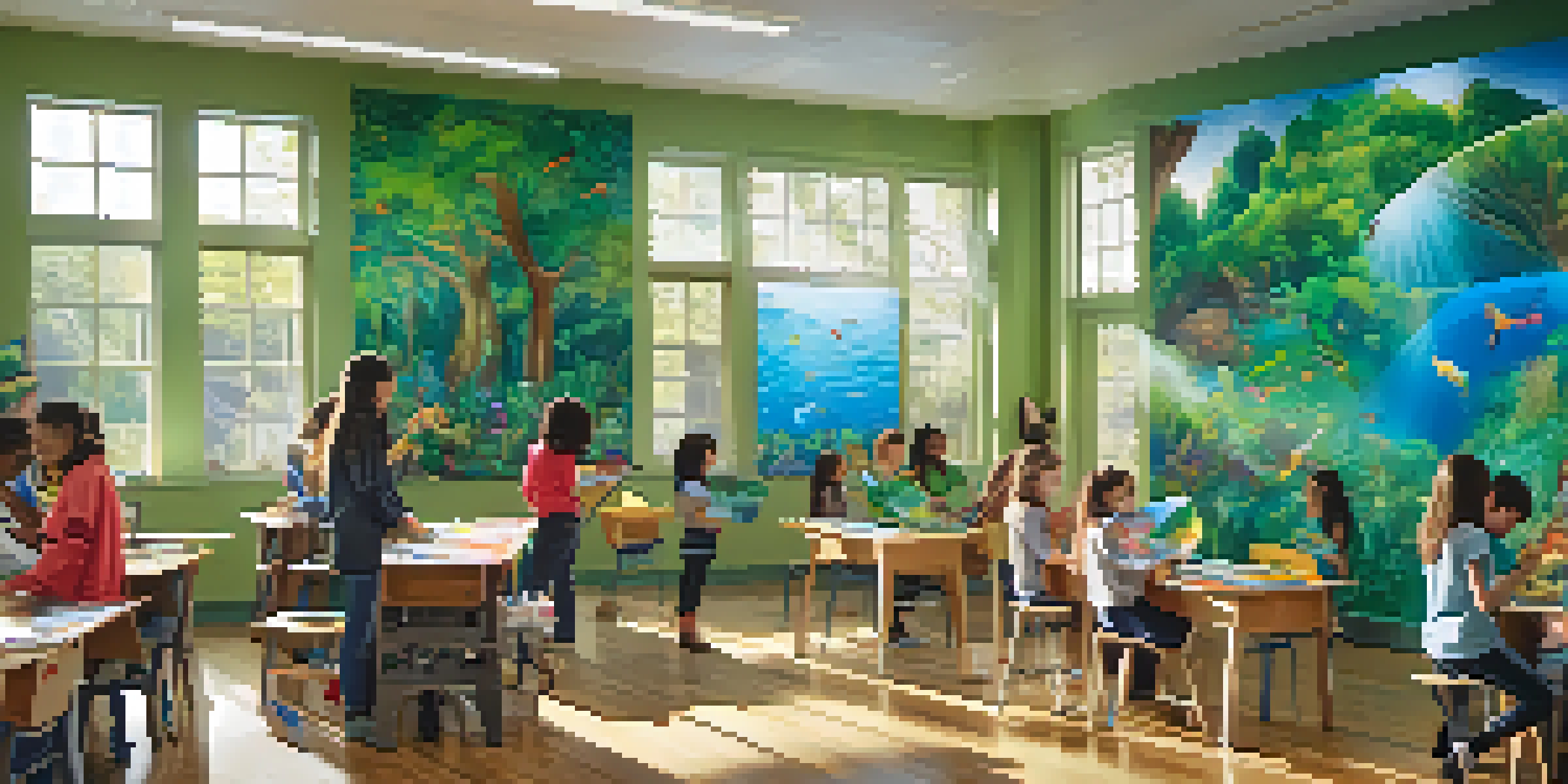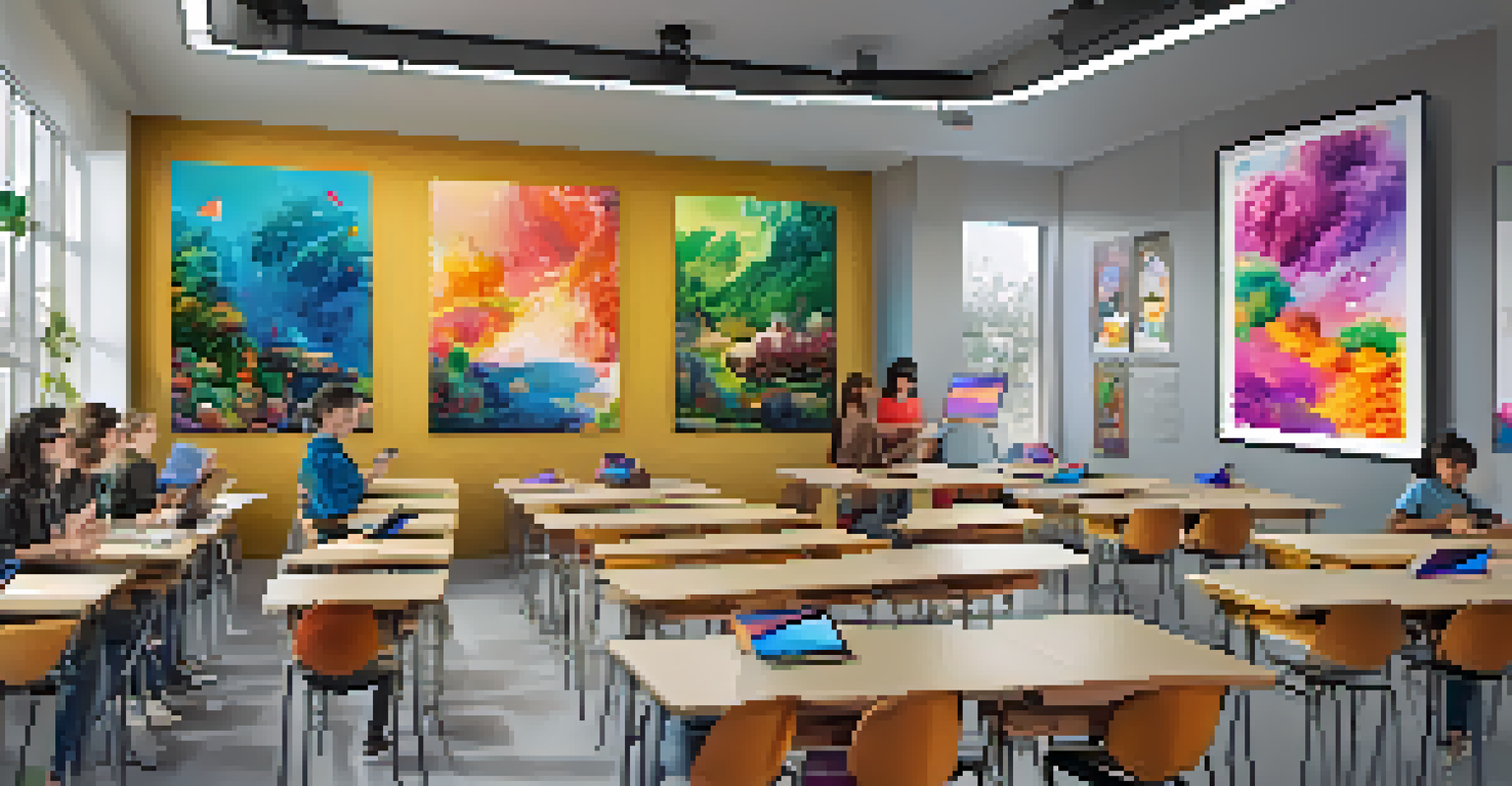Using Art to Teach Sustainability in Classrooms

The Importance of Teaching Sustainability in Schools
Sustainability is a crucial topic that affects our planet's future, making it essential to teach it in schools. By addressing environmental issues early, we empower students to become responsible citizens who care for their surroundings. Schools can play a pivotal role in shaping young minds that value sustainability, ensuring a greener planet for generations to come.
The greatest threat to our planet is the belief that someone else will save it.
Integrating sustainability into the curriculum helps students understand the interconnectedness of ecosystems and human activities. It also inspires critical thinking about how to solve real-world problems. When students grasp these concepts, they are more likely to take action, whether through recycling, conservation, or advocating for environmental policies.
Art provides a unique and engaging avenue to discuss sustainability, making complex ideas more relatable. By using creative methods, educators can spark interest and passion in students, fostering a deeper connection to environmental issues. This creative approach not only enhances learning but also makes it enjoyable.
Incorporating Visual Arts to Promote Environmental Awareness
Visual arts, like painting and sculpture, can serve as powerful tools for raising environmental awareness. Students can create artworks that reflect their thoughts on sustainability, using materials that might otherwise be discarded. This hands-on experience encourages them to think critically about waste and resource management.

For instance, a classroom project could involve creating sculptures from recycled materials, allowing students to explore creativity while discussing the importance of recycling. Such activities help students understand the impact of waste on the environment and inspire them to find innovative solutions.
Sustainability in School Curricula
Teaching sustainability in schools empowers students to become responsible citizens who actively engage in environmental stewardship.
Additionally, art can be a medium for storytelling, allowing students to express their views on climate change and other environmental issues. This not only cultivates empathy but also empowers students to use their voices in advocating for a sustainable future.
Using Performance Arts to Spread Sustainability Messages
Performance arts, such as theater and dance, can effectively convey sustainability themes. By participating in plays or performances about environmental issues, students can engage deeply with the subject matter. This immersive experience helps them internalize the importance of sustainability and encourages them to explore their role in addressing these challenges.
Art is not a mirror to hold up to society, but a hammer with which to shape it.
For example, a school could stage a play focused on climate change, with characters representing different viewpoints and solutions. Such performances not only entertain but also educate audiences, creating a ripple effect within the community. Students learn collaboration and communication skills while also spreading awareness.
Moreover, incorporating music and dance into sustainability education can make the learning process dynamic and memorable. Songs about the environment can resonate with students, making the message stick long after the performance ends.
Engaging with Nature Through Art Projects
Taking art projects outdoors allows students to connect with nature and appreciate its beauty. Activities like nature journaling or creating mandalas from natural materials encourage mindfulness and observation of the environment. These experiences help students recognize the importance of preserving the natural world.
For example, students could spend a day collecting leaves, stones, and flowers to create an artwork that celebrates biodiversity. This not only fosters creativity but also instills a sense of stewardship toward local ecosystems. By involving students in hands-on activities, they are more likely to value and protect their environment.
Art as a Tool for Awareness
Visual and performance arts provide engaging ways for students to express their views on environmental issues and inspire action.
Additionally, outdoor art projects can serve as a platform for discussions about local environmental issues. When students see the beauty of their surroundings, they are motivated to learn about sustainability and become advocates for change.
Collaborative Art Projects for Community Engagement
Collaborative art projects can strengthen community ties while promoting sustainability. By working together on murals or installations that highlight environmental themes, students can engage with their communities meaningfully. This collaboration fosters teamwork and a sense of belonging.
For instance, a school could partner with local organizations to create a community garden, incorporating artistic elements that reflect the neighborhood's culture and values. This not only beautifies the area but also educates the community about sustainable practices. Such projects can lead to lasting change and inspire further environmental initiatives.
Moreover, showcasing these collaborative artworks can spark conversations about sustainability among community members. When art becomes a medium for dialogue, it can inspire collective action towards a greener future.
Integrating Technology and Art to Teach Sustainability
In today's digital age, technology can enhance art education and sustainability discussions. Tools like graphic design software or digital storytelling platforms allow students to explore creative ways to communicate their sustainability messages. This integration can make learning more relevant and engaging.
For example, students could create digital posters or videos highlighting environmental issues and share them on social media. This not only spreads awareness but also demonstrates how technology can be used for positive change. By merging art and technology, students can develop skills that are valuable in today’s job market.
Community Engagement Through Art
Collaborative art projects strengthen community ties and promote sustainable practices while fostering a sense of belonging among students.
Additionally, using virtual reality or augmented reality in art projects can immerse students in environmental scenarios. This innovative approach helps them visualize the impact of climate change, making the concept more tangible and urgent.
Assessing the Impact of Art on Sustainability Education
Assessing the effectiveness of art in teaching sustainability is crucial for ongoing improvement. Educators can gather feedback from students about their understanding and engagement levels before and after art projects. This data can help refine teaching methods and ensure that the objectives are being met.
For instance, surveys or reflective journals can provide insights into how art has influenced students' attitudes towards sustainability. Understanding what resonates with students allows teachers to tailor future projects to maximize impact. This ongoing evaluation fosters a cycle of continuous learning and adaptation.

Moreover, sharing success stories and best practices with other educators can amplify the reach of these initiatives. By collaborating and learning from one another, schools can collectively enhance the role of art in sustainability education.